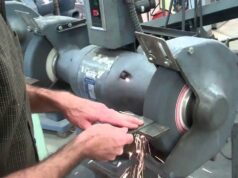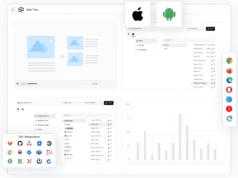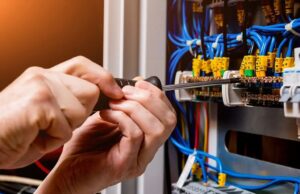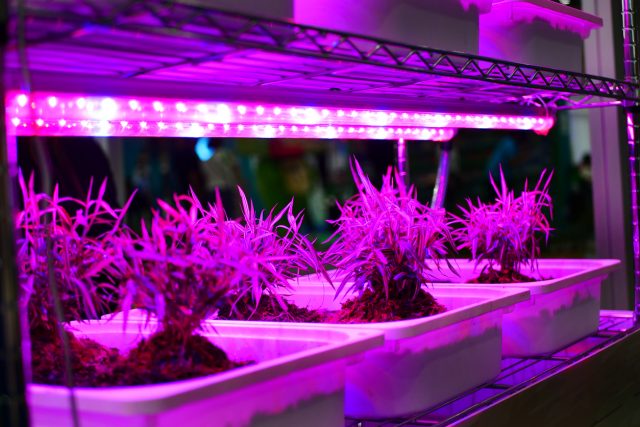
Growing plants indoors is simply impossible without the use of LED grow lights, especially if you live in the area where there are not enough sunny days to grow excellent crops. LED lamps compensate for the lack of light and stimulate plant growth by emitting electromagnetic waves favorable for photosynthesis. To help you choose the lighting that suits your needs best, we’ve put together a short guide on how to pick the perfect product. And if you want to read professional reviews of specific models, check out 420growradar.com.
Benefits of LED Lights
LED lamps have a number of advantages that distinguish them from other types of lighting. They work for 5-10 years, do not emit heat, and do not fail during one-time voltage drops. You can adjust the brightness and intensity of their glow, creating almost ideal conditions for plants close to natural. Compared to incandescent lamps, LED ones consume 70% less energy, and they are also safe and environmentally friendly. The only drawback is the rather high price, but it pays off pretty quickly.
Today’s cheapest option for lighting elements is an ordinary incandescent lamp, but it is definitely not suitable for seedlings. Firstly, even the most powerful and expensive model will not allow obtaining the required amount of such important blue and red light due to the limited spectrum. Secondly, no matter how far you place lamps above your seedlings, burning plants’ risk is still very high. That is why professional growers choose LED lighting.
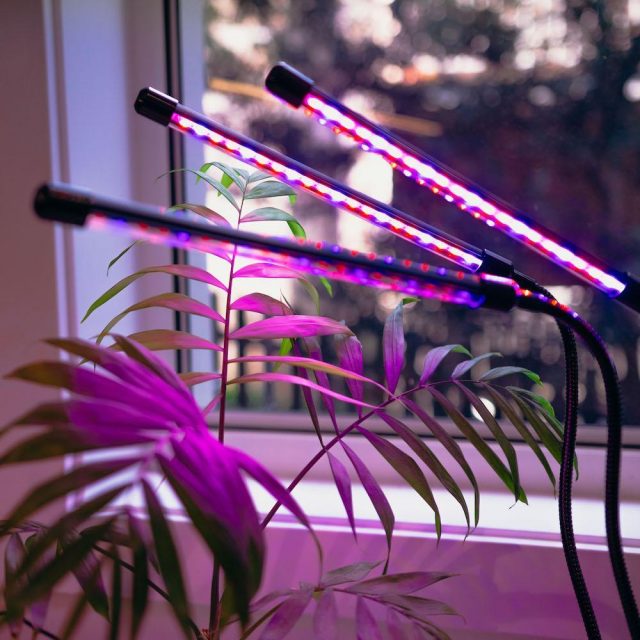
Things to Consider
Unlike many other lamps, LED lighting has a wide variety of shapes and designs, which can also be characterized by individual functional features. Here’s what you should look for when choosing the right appliance.
Type
There are three main types of grow lamps:
- Bicolor lamps. The simplest one; it includes only two types of LEDs: blue and red. They have a beneficial effect on plants’ growth and development and are important for the activation of photosynthesis. These lamps are suitable for any seedlings grown on a windowsill as a supplement to natural light.
- Full-spectrum lamps. They contain all the colors of a rainbow (red and blue LEDs have peak brightness). For this reason, full-spectrum lamps are sometimes referred to as “personal sun.” It is possible to grow plants from seed to harvest in the complete absence of sun and light (even in a dark room) using them.
- Multispectrum lamps. They combine warm white, red, blue, and far-red. This mix stimulates flowering and fruiting as much as possible. Multispectral lights are used for dense plantings and adult indoor plants. Although, such a type is less suitable for seedlings.
When choosing lamps of a specific color, keep in mind that ultraviolet radiation has a bactericidal effect, and infrared one stimulates the growth of the aboveground parts. Orange lighting promotes rapid fruit ripening. But plants reflect green and yellow colors, so they are practically useless as they do not affect their growth.
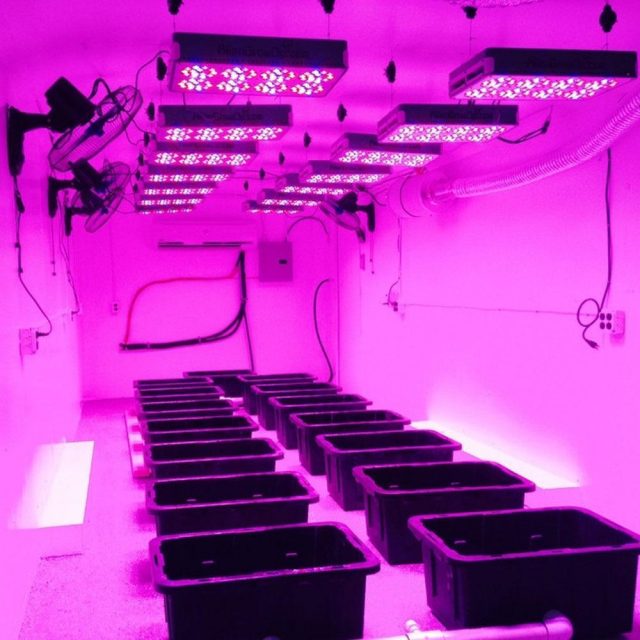
Number of LEDs
Modern LED grow lamps can have different color ratios (red to blue). It can be 10:3, 15:5, or 5:1. In most cases, the best option is the latter, in which there is one blue for five red LEDs. True, such a solution can be called optimal only if your seedlings receive additional natural lighting. As for the total number of LEDs, this value will depend on the area that your plants occupy. For 10 square feet, 30-50W of LED power is usually sufficient, that is, 30-50 pieces of 1W LEDs. This calculation is suitable for growers whose plants receive some natural sunlight. If you grow seedlings without it, the number of LEDs should be increased.
Power
The brightness directly depends on the power characteristics of LED lamps. So, 2-3W lighting elements can provide a luminous flux of 250 lumens, and 8-10W ones give 700 lumens. However, these indicators are not enough for most plants grown indoors, so now, you can find large lamps for 100 to 2000W on the market. When choosing the right device for your plants, remember that LEDs cannot work at maximum for long. Therefore, they should have some power reserve (10-30%).
Cooling system
For LED lamps to work continuously for many hours, they should have a built-in cooling system in the form of fans. The average recommended time to use artificial light for most plants is 13-14 hours every day. The maximum LED temperature should not exceed 160°F. That is why fans should be built into the back of a case. It will not only extend the life of a product but also protect your plants from overheating.
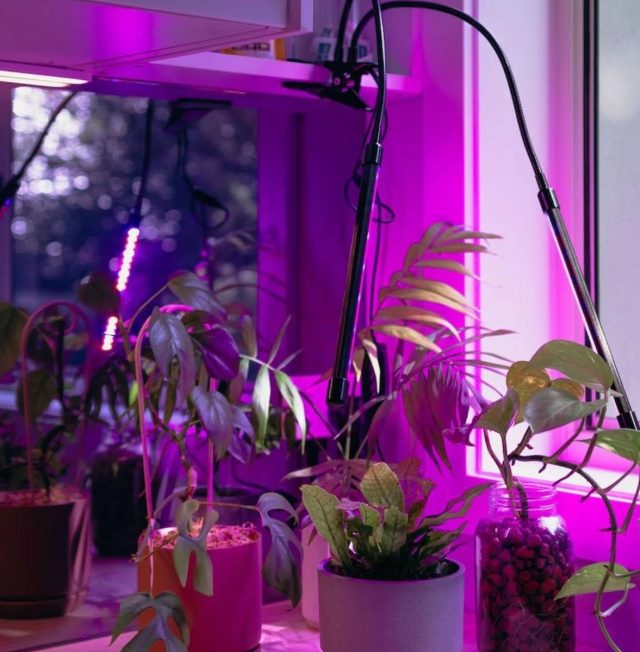
How to Install the Lamp Correctly
The light should fall on your plants from above and from the side. The closer the lamp is installed to the seedlings, the better the effect of picked lighting. However, do not bring the LED light too close to your plants to prevent leaf burns or general overheating. The minimum distance to pots should be 4 inches, the maximum — 10-18 inches. You need to adjust the distance depending on the power of a device.
As the seedlings develop, the light spectrum will need to be adjusted as well. So, blue light is required for fragile shoots that barely appeared above the soil at the initial stage of growth. It will promote the development of a root system. You should add more orange, red, or pink light to build up green mass, bloom, and form buds in the future.
Best LED Lamps for Efficient Plant Care
Lack of lighting negatively affects indoor plants. Their shape and growth rate change; leaves and stems become deformed. In this case, you need to take care of additional lighting. By adhering to these simple rules and observing the requirements for the selection and placement of an LED light source, even a novice grower will be able to grow healthy and viable plants, which will subsequently give a good harvest. Growing seedlings is a simple task, and with the right lamps, it will be even easier. With their help, you will grow plants and get crops in the most unfavorable and deprived-of-natural-light places.

